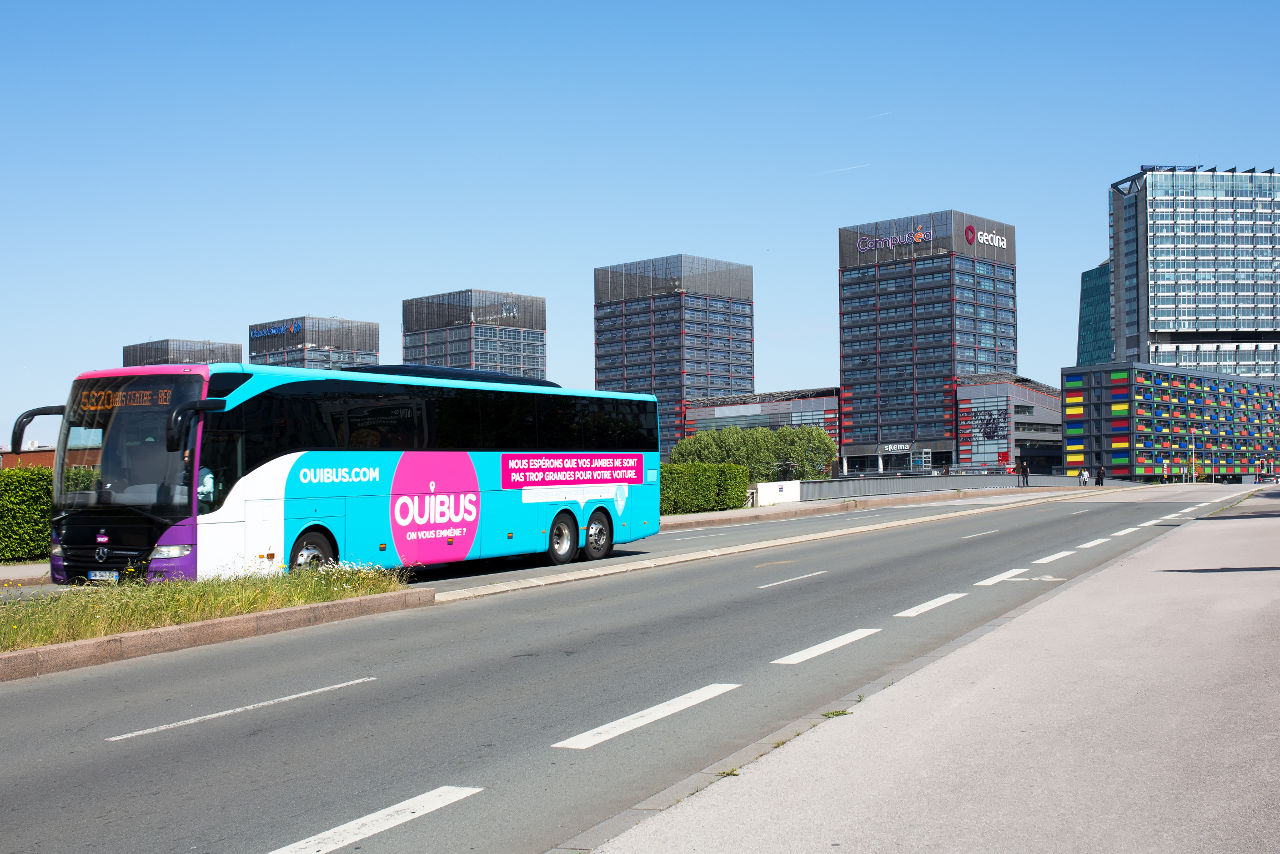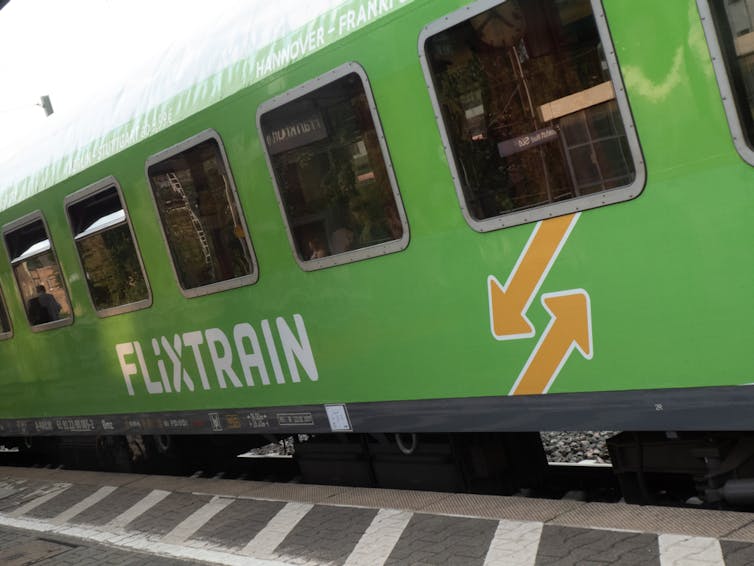BlaBlaCar's acquisition of Ouibus, or the major upheaval in mobility services
Since the long-distance bus market was opened up to competition in August 2015, operators have been seeking to achieve critical mass in order to become profitable.
Thierry Blayac, University of Montpellier and Patrice Bougette, University of Côte d’Azur UCA

From the moment this new market was created, the strategy developed by new entrants was to offer attractive fares in order to stimulate demand for this new mode of transport, which was suffering from a lack of recognition in France. In 2017, 7.1 million passengers used long-distance bus services, an increase of 14.5% compared to the previous year.
As soon as this new market opened, it attracted a relatively young, family-oriented, or retired clientele that was price-sensitive. Changing consumer habits also play a role, with Millennials, for example, favoring the collaborative economy. More recently, during the SCNF strikes in the spring of 2018, this new mode of transportation attracted a more professional clientele.
On the operator side, a "club of five" quickly formed after the opening of the long-distance bus market, with the main players being Ouibus (formerly IDBus), a subsidiary of SNCF, Flixbus, a leading German operator in its domestic market, Isilines-Eurolines, which belongs to the French group Transdev, Megabus, part of the English group Stagecoach, and finally Starshipper, which brings together independent coach operators based mainly in southwestern France. A few months later, in July 2016, Flixbus and Ouibus announced the acquisition of Megabus and Starshipper, respectively. These acquisitions enabled the two groups to consolidate their market positions and expand their services geographically.
Acquisition as a strategy for entering a new market
In a market that is still maturing (only three years old), operators' pricing policies have not yet fully stabilized (although they are close to 5 cents per km per passenger) and have recently tended to increase, even outside of any acquisitions that may have been made. In terms of pricing, bus services are close to the prices charged by carpooling services, represented by the market leader BlaBlaCar, which recently acquired Ouibus.
A quick look at recent developments in transportation modes and mobility services shows that consumers are increasingly inclined to compare different modes or use them in a complementary manner to ensure door-to-door travel. The advent of digital technologies, programming, and smartphone app development now makes such combinations possible. In its ultimate form, this system tends towards the concept of mobility as a service (MaaS). This refers to the integration of most mobility services into a single app, combining public transport and on-demand mobility with a single billing system. Successful trials have already been conducted in urban areas in Northern Europe (Finland and Sweden in particular).
This is where BlaBlaCar comes in. On November 12, the carpooling specialist announced its intention to acquire 100% of Ouibus. The amount of the transaction has not been disclosed, but the carpooling leader will need to raise €101 million to finance the operation. The aim of the acquisition is to enter a new market with an already visible operator and to enable it to benefit from its international development and data management.
An acquisition to develop synergies
Synergies will be developed within the merged group. First, the complete transition to a platform-based business model, similar to Flixbus, which does not own any buses, will undoubtedly reduce the operating costs of bus routes. The aim is to become an intermediary between passengers and independent coach operators, relying on subcontractors and external partners.
Next, even more flexible network management will become possible. Bus service offerings could already be easily varied without significant cost depending on the season and special events (e.g., ski season, Euro 2016). From now on, services could vary even more seasonally than they do today, with, for example, off-peak bus routes being replaced by carpooling overnight.
Finally, the group will be able to offer consumers a "train + carpooling" package thanks to a partnership with SNCF, which has acquired a minority stake in BlaBlaCar. Starting in summer 2019, oui.sncf, SNCF's travel platform, will combine train, bus, and eventually carpooling. The SNCF's strategy aims to make its platform "a true personal mobility assistant," even integrating transport solutions from other competing mobility players. In line with this same intermodal approach, a partnership between Ouibus and Hop was recently established to provide bus transport for passengers traveling on Hop! airline routes. A "bus + plane" package will then be offered.
The logic of consolidation extended to railways
On the one hand, the business model of a platform that does not own the coaches makes it easier to enter this new market. There is no need to invest in network infrastructure or coaches. Sunk costs, derived from contestable market theory, are not high. On the other hand, the intangible assets necessary for market performance, particularly big data management, should not be underestimated. Investments must be made in algorithms to optimize platform matching and real-time management of supply and demand (for example, Flixbus employs 150 developers solely to analyze the German market). The specific assets of the sector are becoming the data processing power behind the platform and customer use.
However, there is one fly in the ointment: the management and location of bus stations within cities. ARAFER has published a study on this subject which shows the heterogeneity of situations, often leaving consumers to cover the "last mile" to their homes.
By selling its loss-making bus subsidiary, SNCF is refocusing its offering on rail transport, notably with its low-cost strategy, which has been a huge hit with consumers. The group is thus preparingfor the opening up of passenger rail transport in Franceto competition, scheduled for 2021 for high-speed lines and 2023 for conventional services.

Cineberg/Shutterstock
Interestingly, Flixbus entered the German rail market with its FlixTrain brand, following the same platform business model. Intermodality therefore appears to be the key strategy for gaining a foothold in a rapidly consolidating landscape.![]()
Thierry Blayac, Professor of Economics, Montpellier Center for Environmental Economics (CEE-M), University of Montpellier and Patrice Bougette, Senior Lecturer in Economics, CNRS, GREDEG, University of Côte d'Azur UCA
This article is republished from The Conversation under a Creative Commons license. Readthe original article.